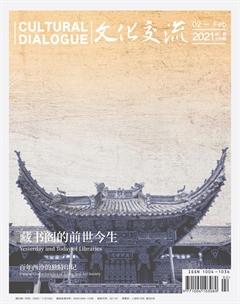缘缘堂中丰子恺



在古运河畔的桐乡石门湾,一泓绿水,孕育了一位戴着圆形眼镜、抚着银白长髯,欣然微笑、逍遥自在的智者——丰子恺。
石门湾的缘缘堂,是这位淡泊悠然、率真本色的中国传统文人的精神栖憩之地。正直、高大、轩敞、明爽的缘缘堂,是丰子恺亲自设计的三楹高楼。他对缘缘堂的珍惜与喜爱,决非常人可以体察。他在文章中写道:“但倘使秦始皇要拿阿房宫来同我交换、石季伦愿把金谷园来和我对调,我决不同意。”
高楼三楹、朴素轩敞的缘缘堂建成于1933年,不仅拥有藏书数千卷,而且堂中有马一浮、吴昌硕、弘一法师等民国名流的珍贵手迹。“缘缘堂”匾额,是马一浮所题。一幅老梅中堂,原为吴昌硕手笔,内联是弘一法师所题《华严经》句:“欲为诸法本,心如工画师。”外有主人自写的杜甫诗句:“暂止飞乌才数子,频来语燕定新巢。”还有弘一法师《大智度论·十喻赞》的一堂大屏……当时的缘缘堂聚集了中国一流大师的笔墨丹青,是何等的流光溢彩!放到今天,无论是艺术价值,还是金钱价值,任何一幅作品,都是难以估量的。当然,说到金钱价值就流俗了,老人家说过自己“平生不善守钱”。
缘缘堂既是丰氏一家人的生息之所,又是丰子恺的精神家园。“你是我安息之所。你是我的归宿之处。”
丰子恺对家乡是怀有深情的:“走了五省,经过大小百数十个码头,才知道我的故乡石门湾,真是一个好地方。”在《辞缘缘堂》中,丰子恺如是写道。这个“好”,不仅仅是浙北平原的水乡风情,更因为是有缘缘堂的存在。
相信,丰子恺对于故乡的热爱,是发自肺腑的。
然而,1937年11月下旬,侵华日军突袭石门湾,丰子恺率亲族老幼十余人仓皇逃难,永别了缘缘堂——1938年1月,炮火焚毁了缘缘堂,一切成了游子悲痛的记忆。丰子恺在《还我缘缘堂》《告缘缘堂在天之灵》《辞缘缘堂》等一系列文章中,如泣如诉、悲怆不已地念叨着缘缘堂。读着这些文字,我感同身受,情不自禁。
现在我们看到的缘缘堂是桐乡市于1985年重建的,丰子恺生前的挚友、新加坡佛教总会副主席广洽法师慨然资助,为重建一事共襄盛举。1998年,桐乡市还在丰同裕染坊店旧址上兴建了丰子恺漫画馆,与缘缘堂连为一体。
今天的缘缘堂,仿旧而建,前楼后院青砖黑瓦,朱栏粉墙,透露着旧式建筑之美。玻璃封存的一对大门焦痕斑驳,是旧时缘缘堂在日军炮火中的遗物,门楣上方有丰先生自题的“欣及旧栖”四个字。
站在这对旧门前,仿佛亲历了那一场残酷的劫难。伫立在这门前,八十多年前的战火风云席卷而来。满腹经纶、一介书生的丰子恺带着家人,仓皇逃难。中华民族的耻辱与苦难,也是每一个炎黄子孙的耻辱与苦难。丰子恺和他的缘缘堂,同样承担了祖国的磨难与历史的重负。
丰子恺信佛,历来只“显正”而不“斥妄”。经此浩劫,他看到了人类残酷、悲惨、丑恶和黑暗的一面。“显正”必须“斥妄”,“斥妄”才能“显正”。这是艺术的辩证法,也是人生的辩证法。“凭五寸不烂之笔来对抗暴敌,我的前途尚有希望。”丰子恺自觉地把個人的命运与国家的兴亡紧密联系起来,“一心向前,勇猛精进。”佛家的隐忍,陶渊明的悠闲,在国难当头方显赤子之心:铁骨铮铮,激越高昂。
隐逸或者进取,消极逃避还是积极抗争,作为文人的丰子恺做了最好的回答和选择。丰子恺说过:“我的心为四事所占据了:天上的神明与星辰,人间的艺术与儿童。”一个心灵明净的人,才真正是一个可爱的人。而今,天上升起了一颗“丰子恺星”,这是子恺先生超凡脱俗的心灵化成的星辰。
古运河犹在悠悠流淌,缘缘堂门前的重瓣桃花正欣然盛开。置身于物是人非的缘缘堂,自然已难以领略当年丰子恺笔下的那般神韵与情趣了。匆匆的过客只能是浮光掠影地感受着一个文人美丽的憧憬与向往:春天,堂前燕子呢喃,窗内有“小语春风弄剪刀”的声音。夏天,红了樱桃,绿了芭蕉。秋天,夜来明月照高楼,楼下的水门汀映成一片湖光。冬天,屋子里一天到晚晒着太阳,炭炉上时闻普洱茶香。
景是情的映照。这情景交融的缘缘堂,只能是丰子恺所独有的精神归宿。
恋恋不已盘桓在缘缘堂,仿佛看到抚髯微笑的丰子恺散淡而平和地坐在缘缘堂的书房里,读书、绘画或者写作,对面墙上悬挂着弘一法师亲撰的对联:真观清静观,广大智慧观;梵音海潮音,胜彼世间音。
丰子恺先生一派潇洒风神、智者风范、大家风度,感悟着艺术,感悟着人生……
Feng Zikai and His Former Residence in Shimenwan
Feng Zikai (1898-1975), a native of Shimenwan or Stone Gate Bay literally situated at a bend of an ancient canal in Tongxiang, was a renowned Chinese literati scholar celebrated for his modern Chinese paintings, essays, music, cartoons and translations.
In 1933, he designed and had a residence built in his hometown. He called it Yuanyuantang or Hall of Predestined Fate. The residence was a grand structure glorified with a collection of several thousand books and inscriptions by famed masters such as Ma Yifu, Wu Changshuo and Master Hongyi. Feng Zikai considered the house home to his heart and soul.
Feng Zikai loved Shimenwan. He became aware of the beauty of his birthplace after he had seen more than one hundred river towns in five provinces. The residence made him love Shimenwan much more deeply.
The happiness didnt last, alas. In November 1937, Japanese soldiers launched a sudden attack on Shimenwan. Feng and more than 10 family members hastily fled. He was not able to come back and see his home again. In January 1938, the grand house was destroyed in a battle. Later Feng wrote several essays in memory of his beloved residence.
The present-day Yuanyuantang was rebuilt in 1985 with funds partly from a Buddhist monk in Singapore. The Buddhist monk was a friend of Feng. In 1998, Tongxiang had Feng Zikai Art Gallery built next door to Yuanyuantang on the site of a dyeing business.
The restored residence is a structure with rooms in the front and a garden in the back. Inside the compound is a glass cabinet showcasing the gate of the original Yuanyuantang. The gate looks partially black and charred. It is the only part of the original residence that has survived the war.
Viewing the charred gate, one can imagine the atrocity of the battle more than 80 years ago. Back then, no one in China could have escaped the calamitous impact of the war. Feng and his ravaged home bore testimony to the savage past.
Feng was a Buddhist. Before the war, he had promoted the justice of the world and abstained from warring against evils. The war changed his worldview and opened his eyes to cruelty, sorrow, ugliness and darkness. During the war, he realized that blasting evils and devils was necessary for promoting justice of the world and promoting justice wouldnt go far without annihilating devils and evils. He said he had passion for four things: gods and stars in the cosmos, art and children in this human world.
The ancient canal hasnt changed much. It bends past Shimenwan as it did so many centuries ago. The peach trees in front of Yuanyuantang bloom annually. A visit to Yuanyuantang does help one better understand what Feng wrote about the residence. A visitor can glimpse into the residence and view how time flies and imagine how the life in yesteryears at the house looked like: swallows chirped in springtime; in summer, cherry trees bore red fruits and palm trees had green fronds, reds and greens in pleasant contrast; the residence was submerged in silver moonlight in autumn, turning the cement ground in front of the house into a pond of light; in winter days, sunshine made the rooms warm and pleasant, the aroma of tea wafted from the teakettle on the charcoal oven. This was how Feng enjoyed life at home.

